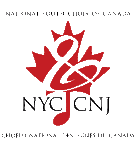- Choose your repertoire wisely: it will have a great impact on your ensemble.
- Begin every rehearsal with a warm-up, regardless of the length of the rehearsal.
- Make the first warm up exercise engaging and energizing.
- Insist on ‘engaged’ and ‘committed’ singing from everyone. Choristers can not be passive.
Label sections of the choral work with words describing the emotion involved.- Rehearse with text as soon as possible.
- Insist on singing musically as early as possible.
- Use the structure of the piece as the blue-print for your rehearsal plan.
- Require everyone to mark all the choral parts.
- Rehearse loud passages softly from time to time to better hear notes and accurate rhythms.
- Rehearse ‘a cappella’ works that are usually accompanied.
- Bring the attention of the choir to the inner pulse of the beat.
- Invite the entire choir to sight read all vocal parts.
- Involve everyone all the time: singing, tapping only the 2nd beat (!), target listening, etc...
- Plan carefully how to approach difficult passages.
- Begin rehearsing a piece by addressing challenges and problems. Then, proceed with a run-through of a section or movement.
- Rehearse a slow-tempo piece faster than written in order to increase the overall energy, to create a healthy sound and to assist with good intonation.
- Make sure the accompanist plays musically everything including the warm-up.
- Use the accompanist in a strategic way, i.e. one part played on the piano while another part is sung.
- Double a part on the piano an octave higher (to help flat singing) or lower (to encourage a richer sound) than written.
- Occasionally, in your seating plan, mingle altos with basses and sopranos with tenors.
- To keep singers engaged, rotate the rows in the choir.
- Have members of a large choir sing their part by rows.
- Invite choristers to sing in a scrambled formation. This is one of the best ways to identify strong and less confident singers.
- Divide the choir in smaller choirs, have them perform a section of a piece for each other.
- Only schedule sectionals for challenging spots that can not be solved by either tutti or individual work.
- Vary your over all approach. Rehearse the musicianship, vocal technique, phrasing and articulation, textual, contextual, interpretative aspects of the score with specific goals.
- Past the ‘learning note’ stage, vary how you begin rehearsing a work: the phrasing, the dynamic scheme, the projection of beginning and ending words etc...
- Always assist the choir to perform well by giving them tangible tools, find ways to make them sound terrific in every rehearsal.
- Teach the choir how to listen and precisely what to listen for.
- Good body alignment is key. It provides you with: stage presence, a dynamic approach to singing, effective breathing and simply feeling great! Remember: tall vowels in a tall body.
- Untrained singers will generally breathe late (especially on syncopated entries). Teach the ensemble to always breathe early, use fast consonant and head for the vowel. The breath needs to be moving and the sound must start with a focused tone.
- No two notes, syllables or words can be sung alike. Make long sustained notes grow or diminish.
- Encourage a wide range of dynamics. It’s easier to sing a gradual crescendo than it is to sing a gradual diminuendo. Go from pp to ff and from ff to pp over 8 beats, sing on numbers to increase the volume at the end of a slow crescendo, or increase the capacity of singing softer.
- Once a while, get into ‘performance mode.’ Rehearse pieces in the performing order of the concert.
- Give a schedule of rehearsals for the term with the works in the order in which they will be performed at the concert.
- To build an optimal sound, focus on vowel matching and healthy vocal production in each section.
- To build an understanding of the piece, develop an awareness of the relationships between sections and balance by training the ensemble to sing in quartet and octet.
- Insist on singing rhythm with energy, vitality and expression. It is important in particular when singing legato articulation.
- Counting subdivisions (1 &2 &3 etc...) can re-energize sustained passages and help tuning.
- In asymmetrical meters, teach singers how to break down each bar and each pulse in the following way: Example, 7/8: have singers count out loud together through extended passages ‘1,2; 1,2; 1,2,3’ (or any other configuration of 7/8).
- Intonation challenges and problems can be the result of a defective vocal technique, out-of-focused vowel or not hearing well the overall harmonic context.
- Understand why ‘this’ sequence of 3 or 4 pitches is difficult. Change the order of the pitches, and then restore the initial sequence. Create extra passing notes, then omit these extra pitches and put that melodic cell back into context.
- To clear up the tone, encourage more ensemble cohesion, ask each singer to sing with their buddy. Ask pairs of singers to breathe together, to begin the tone together and to shape the same vowel.
- Encourage singers to use their own tuning fork and find the pitches themselves. It actually improves intonation of the choir as well!
- Don’t always play the tonic note when starting over: encourage singers to remember it thus encouraging singers to follow more closely the rehearsal process.
- Maximize the clear projection of the bass line thus bringing depth to the entire choral sound.
- Relate the other sections to the bass line for a better understanding of the structure and the entire texture of the piece.
- Make your hand and gestures talk, use fewer words.
- As it is important for the choir to look up, then you must consciously maintain eye contact.
Wednesday, March 31, 2010
Choralicious No. 7: 50 Rehearsal Techniques Aphorisms
Subscribe to:
Post Comments (Atom)





No comments:
Post a Comment